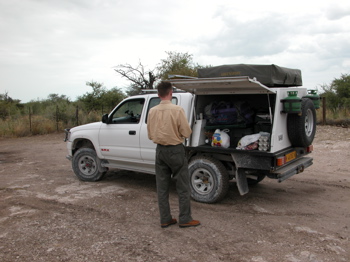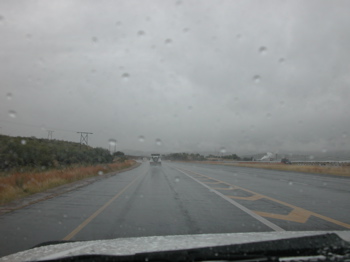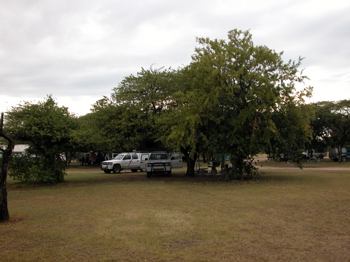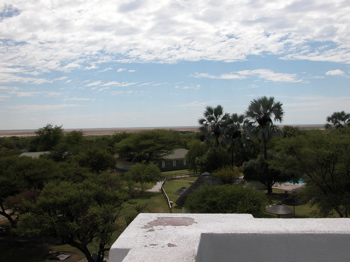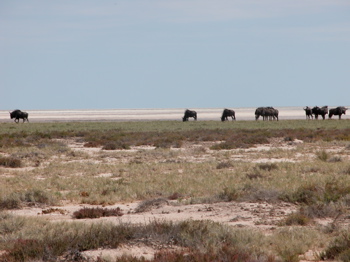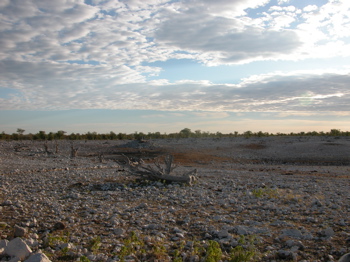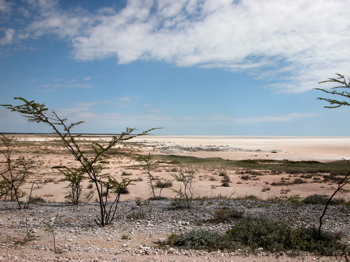
 |
travel@pangolin.liNamibia 2003
|
 |
 |
www.pangolin.li
home Travel
directory Travel
directory Namibia
2003
Main
Namibia
2003
Main Part 1 Etosha
Part 1 Etosha Part 1a
Animals
Part 1a
Animals Part 2
Otjitotongwe Part 2
Otjitotongwe Part 3 Highlands Part 3 Highlands Part 4 Van Zyl's
P. Part 4 Van Zyl's
P. Part 5 Marienfluss Part 5 Marienfluss Part 6 Kaokoveld Part 6 Kaokoveld Part 7 Damaraland
Part 7 Damaraland Part 8
Twyfelfontein Part 8
Twyfelfontein Part 9 Namib Part 9 Namib Part 10 Wolwedans Part 10 Wolwedans Part 11 Gamsberg Part 11 Gamsberg Panorama pics Panorama pics Namibia '03 Gallery Namibia '03 Gallery |
|
contact last updated: 05-Feb-2006 Text/pictures subject to copyright by pangolin.li |
 |
 |
||||||||||||||||||||
Part 1 - Windhoek to EtoshaTravel detailsRoute and Distances: Windhoek (0 km), Otjiwarongo - Namutoni (533 km), Halali (80 km direct, we did ca. 140 km), Okaukuejo (55 km direct, we did ca. 150 km).Weather: Overcast with occasional showers. Go directly to Etosha here. WindhoekWe arrived in Windhoek early afternoon, and were picked up at the Airport by a friendly guy of Asco Car Hire. He drove us to their headquarter, where we took over our Hiluxes, with an in-depth instruction. JJ and Micha had been to Namibia before, and therefore knew the quality of car and service Asco provides, and so there was a shine in their eyes... I, however, was not really prepared that I should now drive in such a monster vehicle and even start to like it! However, Asco really thought of everything while equipping the car - except a shower :-) Well, I admit this might be a bit difficult... Having a fridge/freezer (on a separate battery), a roof tent which can be opened in 2 minutes, and a fuel tank big enough for 1000 km in Kaokoveld prooved more important during our trip.
We then started the first part of our shopping frenzy, to buy provisions for a 3-week trip. Windhoek was the only location with western-style supermarkets (even though shops later used to have just the thing that we really needed...). So we stocked up on meat (there is a good butcher opposite the car park near Zoo Park, on Independence Av.), staples, wine, beer, gin&tonic, vegetables and potatoes. We stayed in Hotel Pension Handke on Rossini Street, a recommendation of Asco because our favourite, Pension Christoph, was fully booked. Handke was okay, a well-run guesthouse in a nice garden, friendly hosts. Only our room was quite small... We had a last "restaurant dinner" in the close-by Fürstenhof, where I had my first Namibian game, Springbok. On the next morning, we set off North, towards Otjiwarongo (where we found a farmer store which provided all the camping stuff we had forgotten to buy in Windhoek - I believe it was on Riebeek or Germania St.) (addition Feb06: this was an Agra shop at junction of Dr. Libertine Amathila Av. and Industria Rd.). It rained a lot, but the last storm stopped when we came close to the Etosha Von Lindequist Gate near Namutoni. Windhoek - Namutoni is easily feasible in one day, but the trip is really boring. Top of page Etosha National ParkThe center of Namutoni Rest Camp is an old German fort, with an awesome view across the park. At the reception, we met a young couple just parking a car with Geneva license plates. They had driven to Etosha from Geneva - almost like our Zurich - Cape Town dream project! We decided to book chalets instead of camping, not to spend the first night out in the rain. The chalet was quite generously spaced and nicely set - I liked it best of the three Etosha rest camps.
A first game drive led us to Fisher Pan, a small salt pan close to Namutoni. It was a very idyllic spot for a sunset gamedrive, with herds of antelopes grazing in the balmy afternoon colors. The next two days were spent with game viewing, following many of the paths available. Etosha is very easy to self-drive, with accurate maps provided in the official park brochure, and with well-maintained dirt roads. We didn't see many other cars, due to low season. However, we also didn't see so many animals, due to the rains. They found water everywhere, so no need to come to the big waterholes. No elephants, no rhinos for us. The negative highlight was the Okaukuejo waterhole at night: two years earlier, JJ and Micha had seen a big elephant family as well as rhino just there, amongst other animals. And this time we saw a mouse and a bird. Or else Olifantsbad, where we imagined elephants plunging and trumpeting - nothing else than a lone gemsbok. But this gemsbok made history during our trip. Because he was the one who dared to look straight into our camera. His relatives usually take another, much less fair approach and turn away the moment the shutter opens. Nevertheless, there are a few wildlife pictures I made... The second night we spent in Halali (small and cosy compared to Namutoni, and located in denser bush), and the third night in Okaukuejo. The latter was the most comfortable, and I also liked its location between the rocky hills and the endless plains towards Leubronn. As in Namutoni, the tower provides a very scenic view across the landscape - especially at sunrise. And there is also a pool to cool down a bit. Remarkable for us were several things: The roaring of lions during the night; the tame ground squirrels (we also saw many wild ones near Wolfsnes), and, last but not least: the training we got from a South African fellow camper who explained us the South-African rules of Braai:
This means that the idea of having decently glowing charcoal ready within 15 minutes after a hard work's day is like a nightmare to a South African braai master. But having a braai SA style is much fun, nevertheless! Europeans, be prepared for this wonderfully hard firewood in Namibia, it lasts for hours (but it maybe also lasted for hundreds of years to grow...)
Top of page Go to:
|
||||||||||||||||||||
 |

